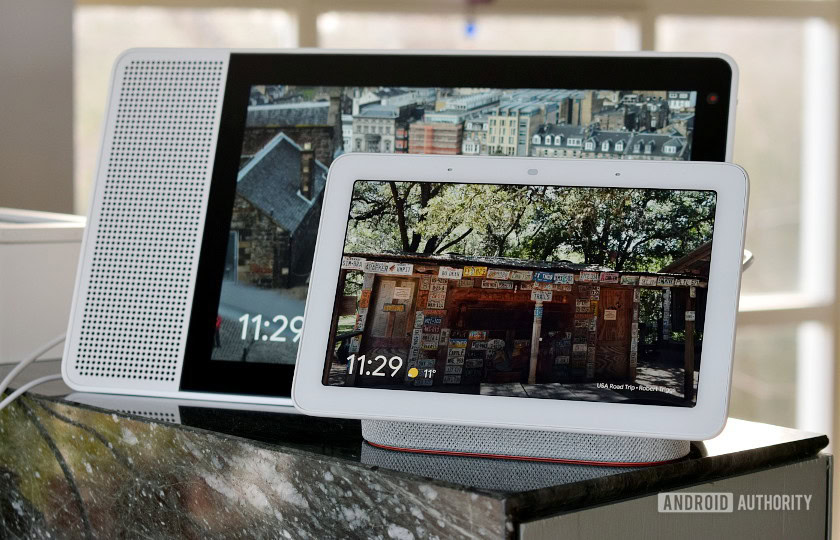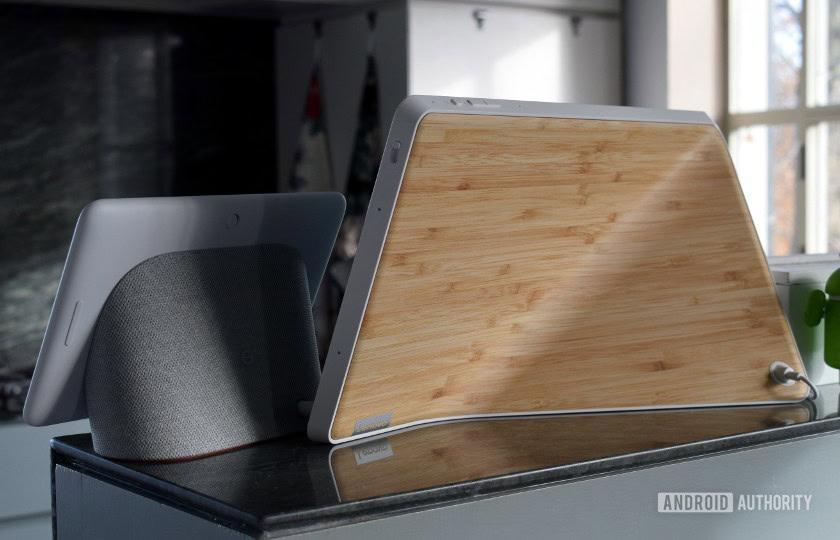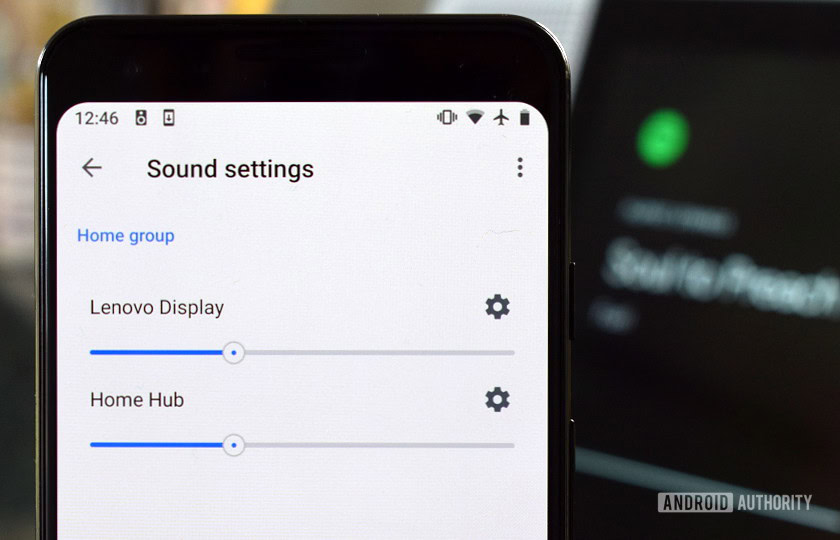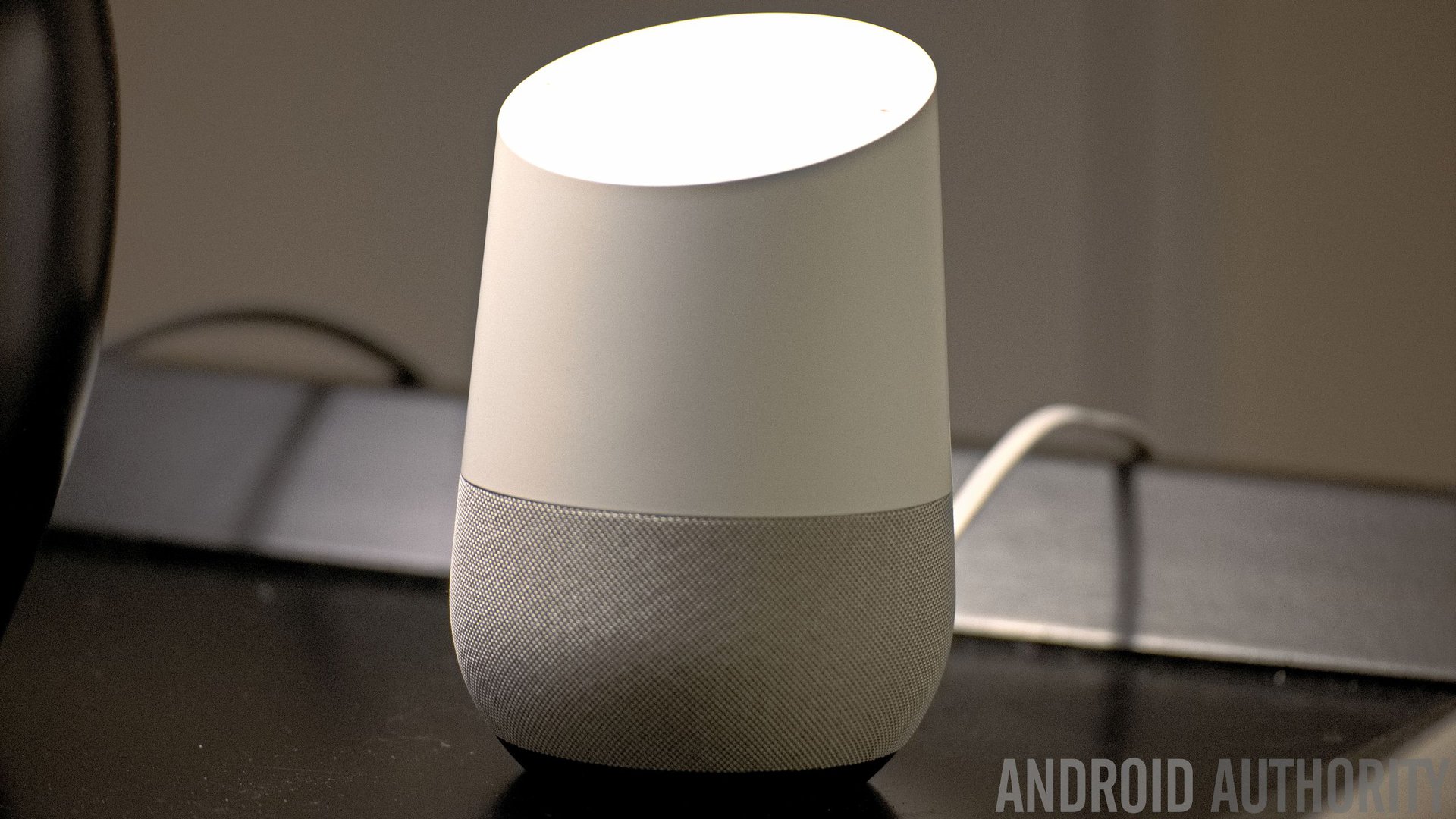Affiliate links on Android Authority may earn us a commission. Learn more.
Google Home Hub vs Lenovo Smart Display
Published onNovember 17, 2018

There are now a few choices if you’re in the market for a new smart display. The JBL Link View, Amazon Echo Show, Lenovo Smart Display, and the new Google Home Hub all pair the convenience of a voice assistant with the utility of a screen for even more useful features.
Lenovo recently rolled out an update to its Smart Display that includes much of the Google Home Hub’s functionality, including the Home View dashboard. With software parity now on the cards, which of these two Smart Displays is the better buy?
Spec showdown
| Google Home Hub | Lenovo Smart Display | |
|---|---|---|
Display | Google Home Hub 7-inch, 1,024 x 600 resolution | Lenovo Smart Display 8-inch, 1,280 x 800 resolution 10-inch, 1,920 x 1,200 resolution |
SoC | Google Home Hub Amlogic CPU | Lenovo Smart Display Qualcomm Snapdragon 624 (Android Things) |
Speakers | Google Home Hub 1x full range speaker, 80dB SPL @1KHz | Lenovo Smart Display 1.75" 10W Full Range Speaker, 2 x Passive Tweeters |
Microphones | Google Home Hub 2x mic array | Lenovo Smart Display 2x dual mic arrays |
Camera | Google Home Hub No | Lenovo Smart Display 5MP wide angle, 720p video call resolution |
Wireless | Google Home Hub Bluetooth 5 802.11 b/g/n/ac (2.4/5 Ghz) Wi-Fi | Lenovo Smart Display Bluetooth 4.2 802.11 b/g/n/ac (2.4/5 Ghz) Wi-Fi |
Dimensions | Google Home Hub 178.5 x 118 x 67.3mm 480g | Lenovo Smart Display 263.2 x 142.2 x 111.4mm / 311.4 x 173.9 x 136mm 1kg / 1.2kg |
Colors | Google Home Hub Sand, Aqua, Chalk, Charcoal | Lenovo Smart Display Grey / Bamboo |
Price | Google Home Hub $149 | Lenovo Smart Display $199.99 / $249.99 |
At $149, the Google Home Hub is much more affordable than the larger Lenovo Smart Display. As such, it’s a little more basic in terms of specifications, with a smaller, lower resolution display, a more basic speaker setup, and no camera for video calls. I would argue just $50 more for the 8-inch Lenovo Smart Display offers good value for money, but $100 more for the 10-inch model feels a little expensive. The sheer size may also make it trickier for some people to find a good home for Lenovo’s behemoth.
The Home Hub comes in a wider range of colors, so you can probably find something you like to fit into your home. Lenovo is more limited here, locking the grey or bamboo options exclusively to the different sized models.

Look and feel
There’s no escaping the large 10-inch, 1,920 x 1,200 resolution display on the bigger Lenovo Smart Display model — it takes over any room it’s in. The high pixel density lends itself nicely to displaying Google Photos in Ambient Mode and playing back videos with crisp clarity. Colors pop, brightness is great, and the 86-degree viewing angle makes sure you can see the display from virtually anywhere in a room. The smaller 8-inch version makes do with a 1,280 x 800 resolution, which still handily beats out the Google Home Hub’s 7-inch, 1,024 x 600 panel.
The Lenovo Smart Display is elegantly designed, boasting a curved bamboo back that lets you stand the display vertically as well as horizontally. Don’t let that sell you on this, though — the UI doesn’t shift into a portrait mode when the hub is on its side apart from when making video calls. This makes the whole design pretty much useless as I can’t see people flipping the hub up just to make video calls. I wonder if Lenovo had thought it might have been able to do more with the UI at some point in early development.
If you're primarily looking for a picture frame or small castable TV, the Lenovo's superior display makes it the better choice.
Lenovo’s design certainly won’t be for everybody, but I prefer it to the Google Home Hub’s functional white plastic. The partially textured look will be familiar to anyone who owns other Google Home products, but if you’re not a fan of pastel colors, the design won’t be for you. Fortunately, the Google Home Hub is nice and compact, making it much easier to find space for — it sits nicely on a desk or side table. You definitely need to set aside some space for Lenovo’s model.

Music and video all-in-one
Integrated Chromecast functionality is a major win for both the Lenovo Smart Display and the Google Home Hub. You can broadcast music and video from a wide variety of apps straight to the speakers with minimal hassle. Unfortunately, Netflix casting support is still absent from both products, but app support is otherwise the same as a regular Chromecast. Again, the bigger size and higher pixel density of Lenovo’s displays make them better products for watching back video, though the Google Home Hub is more than good enough for playing back YouTube music videos or following along with recipes in the kitchen.

Speaking of streaming, both products now support multi-room music streaming. These display can be added to home groups, along with other cast enabled Home smart speakers. Speaker quality differs between the models though.
On the front on the Lenovo Smart Display there’s a large speaker grill housing the 10W full-range and dual passive radiator to direct sound out towards you. The speaker is loud, crisp, and packs plenty of bass. It’s certainly better than the regular Google Home, I wouldn’t recommend it over a decent hi-fi setup if you’re really into your music. The Google Home Hub still packs a decent punch for its little size and I’d ballpark the speaker quality in the range of the regular Google Home. It will certainly suffice as a basic home speaker, but the Lenovo has a slight edge.
One feature separating the two is the Smart Display’s inclusion of a front-facing camera for video calling. It’s nice for those that use Duo, which I personally don’t. The Google Home hub handles regular calls, sans video. Lenovo also included a shutter slider to block the camera, which the privacy-conscious will appreciate.
As a home entertainment system, the Lenovo Smart Display’s better specs give it a definitive edge.
The Google Assistant you know and love
If you’re familiar with Google Assistant, you’ll know what to expect from these Smart Displays. The familiar timer, weather, commute times, reminder, news, music casting, YouTube streaming, alarms, and other features are identical between the two Smart Displays. I might not be the most demanding smart home user, but I couldn’t find any unsupported common commands on these products.
At launch, the Lenovo Smart Display was missing a number of key Assistant features found in the Home Hub. As well as the aforementioned Multi-Room Audio feature, Lenovo didn’t have Continued Conversations and the Home View dashboard for managing other smart home products. Fortunately, these are all now accounted for and Lenovo has also increased the number of third-party smart home products supported by its Smart Display.
There are a few subtle software differences, such as Google implementation of a small LED to display when the mic is muted, while Lenovo sticks a black bar across the screen. Lenovo offers variable volumes for audio and alarms, while Google sticks with just a single setting. Even so, the software of these two Smart Displays offers the same core features, UI, and Assistant experience.
Google Home Hub vs Lenovo Smart Display: Which is worth a purchase?
I prefer the Lenovo Smart Display to the Google Home Hub, owing to the larger display for pictures and video, and the better-sounding speakers. The design certainly won’t suit everybody and the size means it can’t be a discrete part of your home, but overall I think it’s the nicer one.
As a home entertainment system, the Lenovo Smart Display’s better specs give it an edge.
If you’re looking for extra multimedia capabilities, then Lenovo Smart Display is certainly worth a look. Thanks to a recent update, Home View isn’t an exclusive selling point for the Home Hub anymore, either.
However, those looking for a cost-effective, small panel from which to manage their existing smart home will still likely find the Google Home Hub a compelling purchase.
Ultimately, the right one for you will come down to how much you want to spend on a Smart Display. The Google Home Hub is the more attractive entry point for those dipping their toes into their first smart home purchase. Don’t count the JBL Link View out either, if you’re after something a little more music oriented.
What do you think? Which Smart Display would you buy?